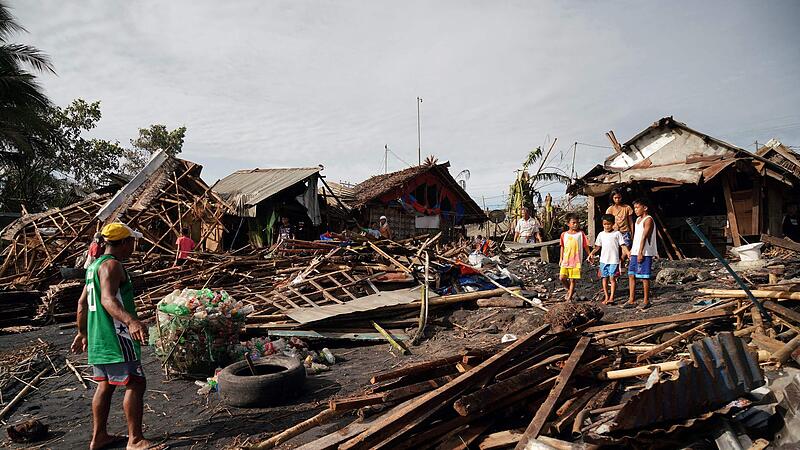View picture gallery
However, the number of victims could continue to rise: 52 people are still missing. More than 300,000 people have had to flee, many of them unable to return to their homes. At least 239 people were injured, according to police. Numerous roofs flew off houses, electricity pylons fell and several villages were flooded. In many areas the power supply and the telephone network were paralyzed. Hospitals were also damaged.
Eastern and western provinces in the center of the island state were particularly affected – from the island of Siargao, which is popular with surfers, where “Rai” hit land on Thursday at speeds of up to 195 km / h, to the province of Negros Occidental. One of the hardest hit provinces was Bohol Island. According to Governor Arthur Yap, the death toll on Monday was 74. Ten other people died on the Dinagat Islands.
Long queues formed at the dispensing points for drinking water and other goods in some of the affected areas on Sunday. “People are queuing for water, food and gasoline. We have family members who have lost their homes,” said actor and entrepreneur Slater Young, well-known from television, describing the situation in the province of Cebu. Some shops there had been looted, said Young, who owns a building materials company in the province. “Cebu is a mess,” he wrote in a post on Instagram.
“Rai” left the Philippines on Saturday and headed west towards the South China Sea. This improved the weather in some of the affected regions and allowed increased rescue work. Doctors, rescue workers and other emergency teams were flown into devastated areas, along with food, water and other relief supplies.
“We have lost our houses, walls and roofs were torn off and blown away like paper by” Odette “,” said the governor of Dinagat, Arlene Bag-ao Dinagat, describing the force of the typhoon, which is called “Odette” in the Philippines. “Our landscape is reminiscent of the time when Yolanda struck our province, if not worse,” she added, referring to the 2013 super typhoon Haiyan Typhoons hit – and “Haiyan” was one of the worst: More than 6,300 people died at the time.
“Rai” hit land on Thursday with winds of up to 195 kilometers per hour. The classification as a super typhoon corresponds to a category five hurricane in the United States. Globally, around five storms of this strength usually occur each year. “Rai” hit the Philippines at the end of the typhoon season. Most violent cyclones develop between July and October. Scientists have long warned that man-made climate change will cause typhoons to increase in strength.
Source: Nachrichten




